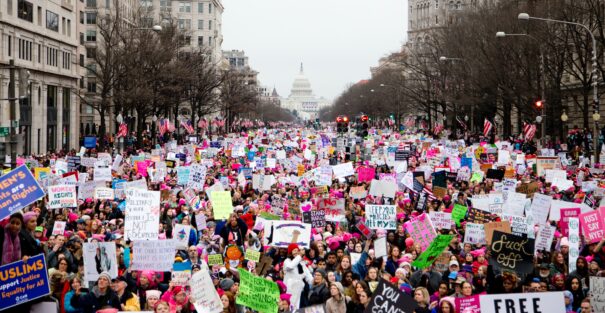
Photo by Vlad Tchompalov on Unsplash
In the U.S., one in four women will have an abortion by age 45. Yet one in three live in states that ban or severely restrict access. Last year’s Supreme Court decision to overturn Roe v. Wade upended reproductive health care infrastructure. Questions about who can provide care, which states they can provide it in, and who can afford access continue to arise. But the main answer is: far fewer.
With limited exceptions, abortion is banned completely in 14 states and within the first trimester in three others. In states where abortion is banned, people are traveling hours farther than they would have to get care or are managing their own abortions. In states that protect access, providers have expanded their physical capacity, staff numbers, and telehealth options. In the six months after the Supreme Court overturned Roe v. Wade, the U.S. recorded 32,000 fewer abortions compared to average trends. In the meantime, rates of self-managed abortions have surged.
For people who are pregnant and happen to qualify for a state’s exception, it can still be difficult to get the care they need. Providers and clinics have moved to protective states, leaving a healthcare desert for women who experience complications and future patients should the restrictions be lifted. Providers who stay are often unable to offer adequate care. This was the case for a woman in Texas who was carrying twins, one of whom would not survive outside the womb. Eventually, a physician told her to go to Colorado because Texas providers could not perform the abortion.
States that today prohibit abortion already had poorer maternal healthcare insurance coverage, access, and outcomes. In 2020, today’s abortion-restriction states had 27% fewer maternal health care providers per 10,000 births compared to their abortion-access counterparts. They also had a 62% higher maternal mortality rate. As providers leave, the Dobbs decision may exacerbate these disparities.
People who live in states with early abortion bans have to decide if they will continue the pregnancy under a much tighter timeline. During Ohio’s six-week ban—which a judge blocked in October—one woman decided to have an abortion the day after she learned she was pregnant. Had she waited a few more days, she would have had to leave Ohio to get an abortion.
Over 66,000 people who wanted an abortion could not get one in their home state. Of those, 35,000 crossed state lines for the procedure or pills. The other 31,000 people may have traveled, self-managed their abortion, or carried their pregnancy to term.
Since 2020, the majority of abortions in the U.S. are medication abortions. People can receive abortion pills as soon as a day after ordering online at a U.S. site and within three weeks when ordering from an international site. Between April and December 2022, telehealth abortions increased by 136%. Telehealth abortion is not just an accessible option; for some women, it’s their only abortion option. After Dobbs, the number of women who lived farther than an hour from an abortion clinic doubled. In states that prohibit abortion after six weeks or earlier, the average travel time increased by 4 hours. The cost of travel, child care, and taking time off work can culminate in prohibitive expenses at a time when 49% of abortion patients live below the federal poverty line.
Grassroots fundraising has become an anchor for abortion access. Yet in Texas, where private citizens can sue people who help patients receive abortions, the legal status of abortion funds is uncertain. Because of this, many groups stopped distributing funds.
The Dobbs decision also shifted political action. In the weeks preceding the 2022 midterm elections, many polls predicted a “red wave.” Instead, Republicans made only conservative gains. Voter registration was at its highest rate for a midterm election since 2000. Nationally, young women were 46% more likely to vote for Democrats, up from 35% in the 2020 presidential election.
Pennsylvanians flipped a United States Senate seat, giving the state two elected Democrats for the first time since 1947. According to exit polls, abortion was voters’ top issue. Nearly half of Michigan voters said the same. Abortion access won down the ballot. In all six states with abortion ballot initiatives, voters chose to protect access. California, Michigan, and Vermont codified reproductive freedom in their state constitutions. Measures that would have restricted abortion in Kentucky, Kansas, and Montana failed.
On Saturday, the anniversary of the Dobbs decision, the Women’s March led rallies across the country calling for reproductive freedom. Former Vice President Mike Pence encouraged a federal 15-week abortion ban, while President Joe Biden and Vice President Kamala Harris advocated for access. “We know this fight will not truly be won until we secure this right for every American,” Harris said at a rally this weekend in North Carolina. “Congress must put back in place what the Supreme Court took away.”
